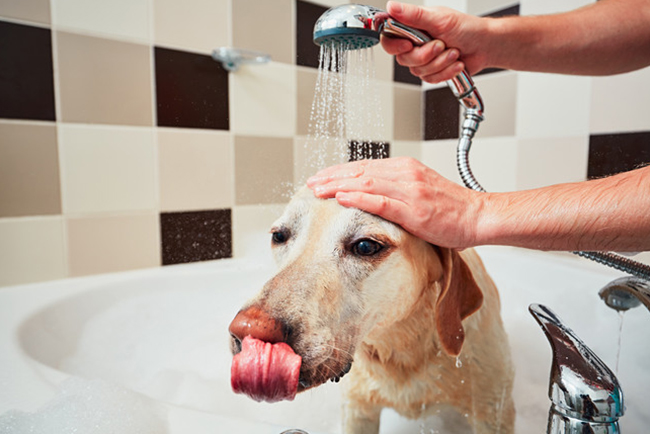Give water no chance
How to seal bathrooms effectively against moisture
The devil is in the details, they say. This is especially true for bathrooms with their particularly high exposure to moisture. If they are not properly sealed, major damage can result. Even small holes or cracks in the joints are sufficient to allow the penetration of moisture and promote mold growth – whether between the tiles or along the wall/floor junctions. The necessary sealing work should only be done by professional craftsmen.
It goes with the territory that wet areas like bathrooms are exposed to high amounts of water. And where there is such a lot of water, precautions must be taken to prevent it from penetrating walls or floors. If these surfaces are expertly sealed, they will be protected against moisture attack for many years. The most critical areas are the transitions between shower or bathtub and wall or floor, because these are the places where the water pools. That’s why the craftsman needs to waterproof these areas with utmost care in order to prevent costly damage.
It’s above all the areas under and behind the bathtub or shower that must be protected against the ingress of water. This is stipulated by DIN 18534, the new waterproofing standard for indoor applications (valid since July 2017). To prevent damage, the bathroom must be expertly waterproofed in such a way that it can be used for 20 to 25 years without any problems. The application of silicone joint sealants at corners and junctions is not sufficient. Special products like edge sealing tapes or full-surface waterproofing under and behind the bathtub are necessary.
In general, the waterproofed area should be extended by 20 cm above the shower area and by up to 20 cm beyond the expected splash water area. As a matter of fact, this kind of work requires a lot of knowhow. To avoid the risk of later damage, it should therefore be done by a professional craftsman. He will take care of all the necessary steps – from expert substrate preparation and application of a priming coat all the way to the actual waterproofing work. The expert knows best where and how to proceed in order to prevent possible water damage.
When it comes to priming and waterproofing, please make sure that the craftsman uses products with the EMICODE® seal. For more than 20 years now, this eco-label has been granted to building and installation products that have been proven to be particularly low in emissions. As a result, your home is a healthier place for living and also the environment is polluted as little as possible. The strict EMICODE® requirements ensure a high quality standard. Building products bearing the EC1 seal reliably protect against moisture and are harmless to human health.

Photo: ©Jaromír Chalabala/123rf.com
Splish splash – dog grooming without fear of flooding. The bathroom is the area with the highest exposure to moisture. To prevent water from penetrating under or behind the bathtub and along the wall/floor junctions, it must be sealed very carefully. This work requires a lot of knowhow. It’s therefore best to have it done by a craftsman. The necessary waterproofing products should carry the EMICODE® eco-label, thus ensuring that the residents’ health is not affected.

Do You Have Questions?
If you have questions about specific topics or if you would like to contact us for any other reason, feel free to contact us by phone, fax or e‑mail.
Phone: +49 211 / 67931–20
Fax: +49 211 / 67931–33
info@emicode.com
Share article on Social Media:
